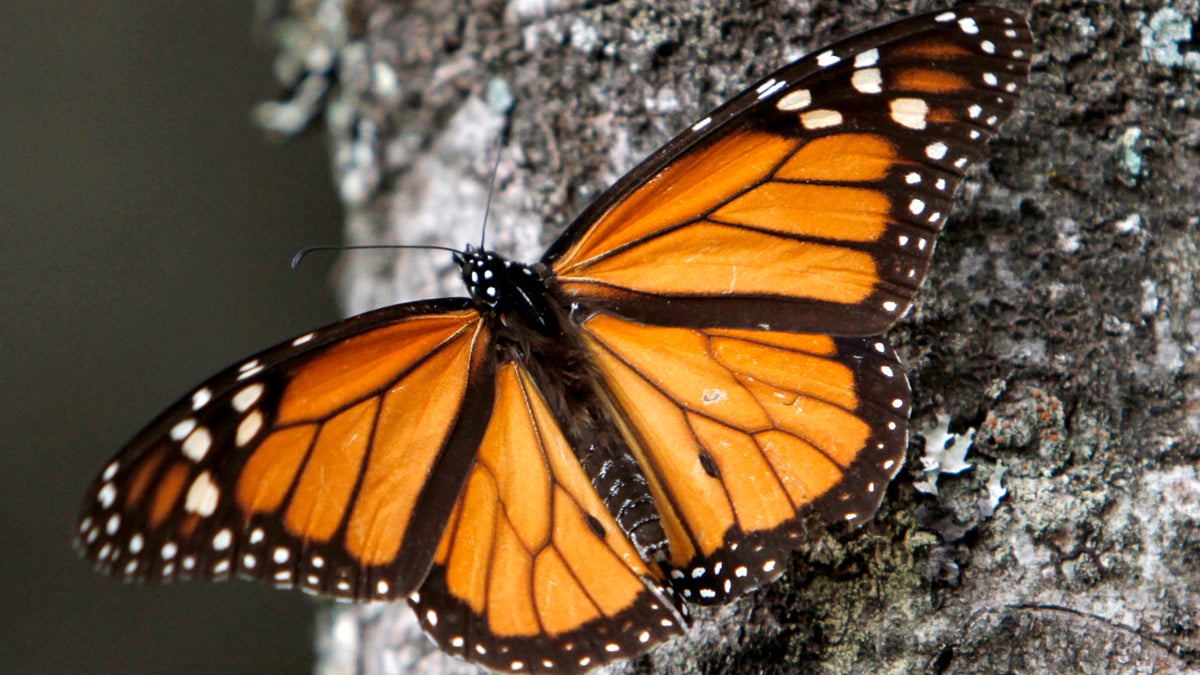Annual count starts for declining monarch populations

Dec. 9, 2011 file photo of a Monarch butterfly. (Marco Ugarte/AP Photo, file)
Cape May’s annual Monarch Monitoring Project kicks off this week amid calls for the federal government to protect the iconic black-and-orange butterflies.
For the next two months, volunteers will count the butterflies making their southbound migration from Canada to Mexico as they pass over Cape May Point.
This year, the numbers they collect may be more timely than ever as conservation groups try to land the butterfly on the threatened species list of the US Fish and Wildlife Service.
Sarina Jepsen is from the Xerces Society, one of the three conservation groups petitioning the federal government for protected status.
“There are numerous local monitoring projects and all are incredibly important,” Jepsen said. “It’s very challenging to monitor a broadly distributed species that covers so much of the landscape, so the more people that are involved the better we can compare those different counts to each other and hopefully come up with an accurate estimate of the monarch population.”
Jepsen said monarch populations counted at wintering sites in Mexico have declined by about 90 percent in 20 years.
The causes, she says, are a loss of habitat and the decrease in available milkweed, the monarch caterpillar’s only food.
Population numbers recorded over Cape May were unusually low last year, but have fluctuated widely over the past two decades.
Cape May Bird Association’s Chris Tonkinson hypothesizes that is because a main factor hurting monarchs worldwide isn’t as big of an issue here: the killing of milkweed plants by herbicides in Midwestern farm country.
“The monarchs that have made their way to the upper Northeast, as they come down the East coast they’re not as exposed to that big agriculture phenomenon,” Tonkinson said, “So there’s a lot more habitat and milkweed for them comparatively.”
The annual monarch count in Cape May continues through the end of October.
WHYY is your source for fact-based, in-depth journalism and information. As a nonprofit organization, we rely on financial support from readers like you. Please give today.

